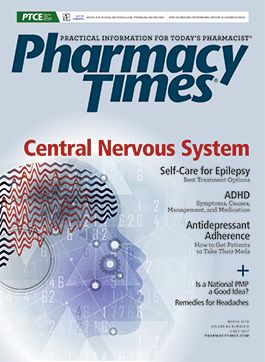Publication
Article
Pharmacy Times
Eliglustat Genotype-Directed Drug Interaction Management
Eliglustat, an inhibitor of glucosylceramide synthase, is a first-line treatment for adults with type 1 Gaucher disease.
Eliglustat, an inhibitor of glucosylceramide synthase, is a first-line treatment for adults with type 1 Gaucher disease. Eliglustat is metabolized primarily by CYP2D6 and, to a lesser extent, CYP3A4. Due primarily to concerns about eliglustat’s effects on cardiac conduction and repolarization, a number of recommendations have been made involving the CYP2D6 genotype and the concurrent use of drugs that affect the activity of CYP2D6 and CYP3A4.1,2
Genotyping for CYP2D6
Before taking eliglustat, the patient needs to be genotyped for CYP2D6 using an FDA-cleared test. If the patient is not receiving any drugs that affect the activity of CYP2D6 or CYP3A4, recommendations are made based on the CYP2D6 genotype (Table 1). Note that the recommendations for intermediate and ultrarapid metabolizers are based on limited information and may be revised as more information becomes available.

Eliglustate Drug Interactions
When the patient is taking drugs that affect CYP2D6 or CYP3A4 activity, the recommendations become more complex. In 30 extensive metabolizers (EMs) given eliglustat 84 mg twice daily with the potent CYP2D6 inhibitor paroxetine, the area under the concentration time curve (AUC) for eliglustat increased by 8.4-fold. In 31 EM subjects given eliglustat 84 mg twice daily, concurrent use of the potent CYP3A4 inhibitor ketoconazole increased eliglustat AUC by 4.4-fold. These results are consistent with significant eliglustat metabolism by both CYP2D6 and CYP3A4, with CYP2D6 being more important.
Considering the large individual effects of CYP2D6 inhibitors and CYP3A4 inhibitors, it is likely that giving eliglustat with both types of inhibitors simultaneously would result in dramatic increases in eliglustat plasma concentrations. Using simulation models, the eliglustat AUC would increase more than 24-fold if the patient received both ketoconazole and paroxetine concurrently.
Table 2 shows the FDA-approved recommendations for concurrent use of eliglustat with CYP2D6 and CYP3A4 inhibitors, alone and combined. Several caveats regarding this table: First, some recommendations are based on estimates from simulations rather than actual pharmacokinetic data in subjects. Also, the FDA designations of “strong” and “moderate” inhibitors of CYP enzymes are general guidelines; in any given patient, a moderate inhibitor may produce a greater interaction than a strong inhibitor in another patient. Moreover, there is high interpatient variability when considering combining eliglustat with any given inhibitor. For all these reasons, the patient needs to be monitored for altered eliglustat response if also receiving CYP2D6 inhibitors, CYP3A4 inhibitors, or CYP3A4 inducers.

Conclusion
Eliglustat is metabolized by both CYP2D6 and CYP3A4, and, depending on the patient’s CYP2D6 genotype, recommendations for handling eliglustat drug interactions differ, from contraindicated to no particular precautions. Even when following the rec- ommendations, the patient should be monitored for altered eliglustat response.
John R. Horn, PharmD, FCCP, and Philip D. Hansten, PharmD, are both professors of pharmacy at the University of Washington School of Pharmacy in Seattle. For an electronic version of this article, visit hanstenandhorn.com.
References
- Belmatoug N, Di Rocco M, Fraga C, et al. Management and mon- itoring recommendations for the use of eliglustat in adults with type 1 Gaucher disease in Europe. Eur J Intern Med. 2017;37:25-32. doi: 10.1016/j.ejim.2016.07.011.
- Cerdelga [prescribing information]. Waterford, Ireland: Genzyme Ireland, Ltd, 2014. cerdelga.com/pdf/cerdelga_prescribing_informa- tion.pdf. Accessed February 7, 2018.







